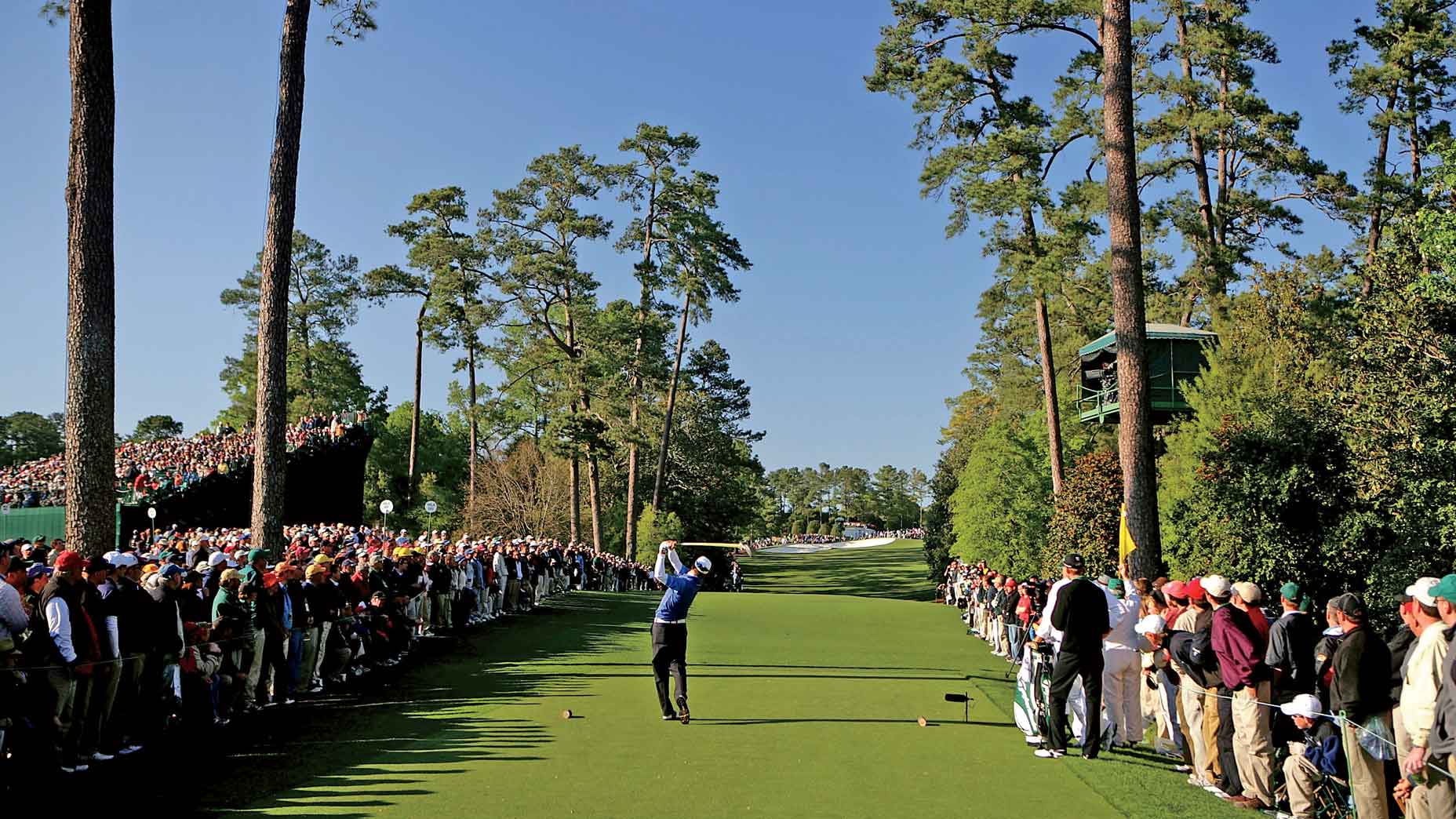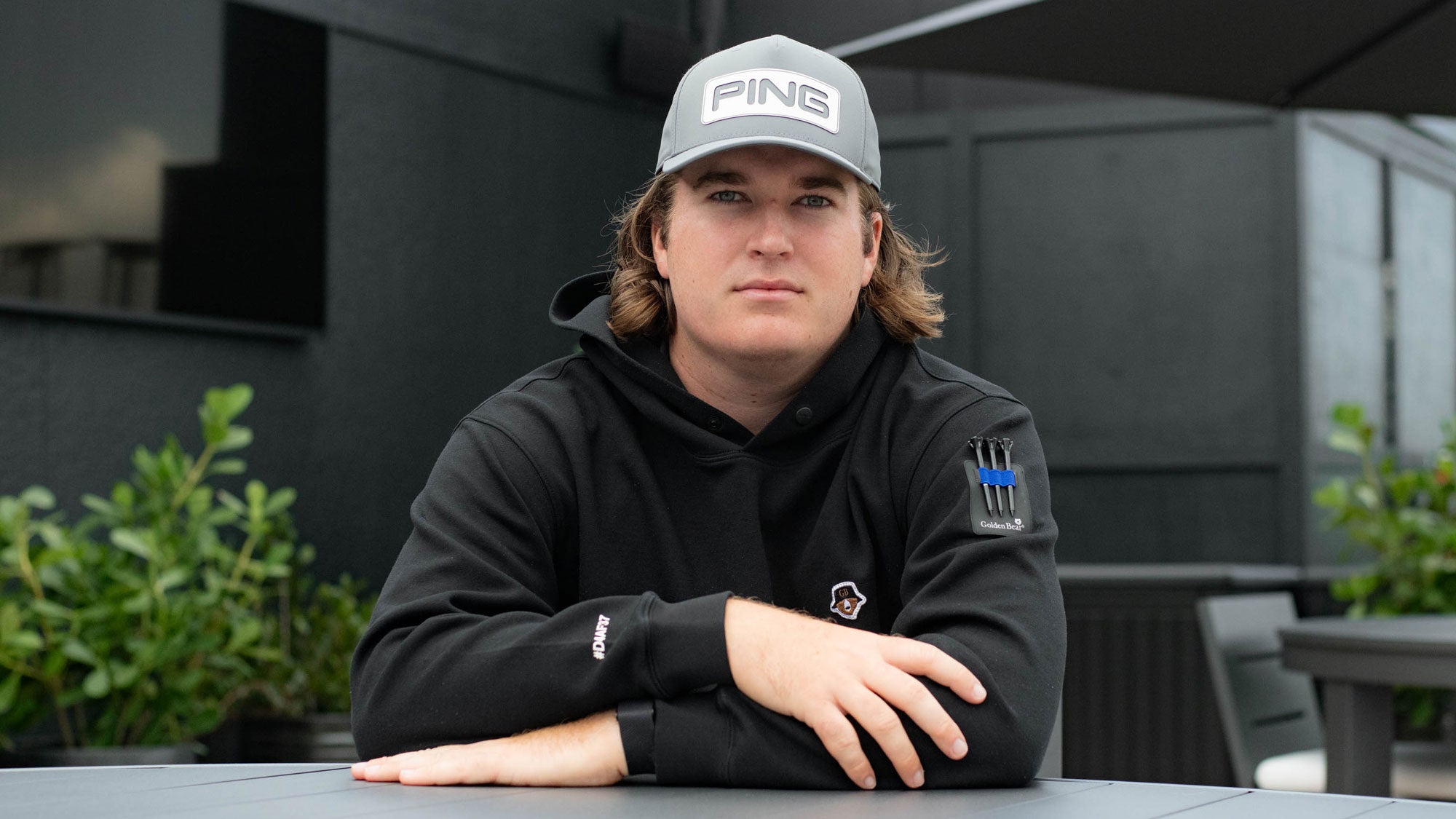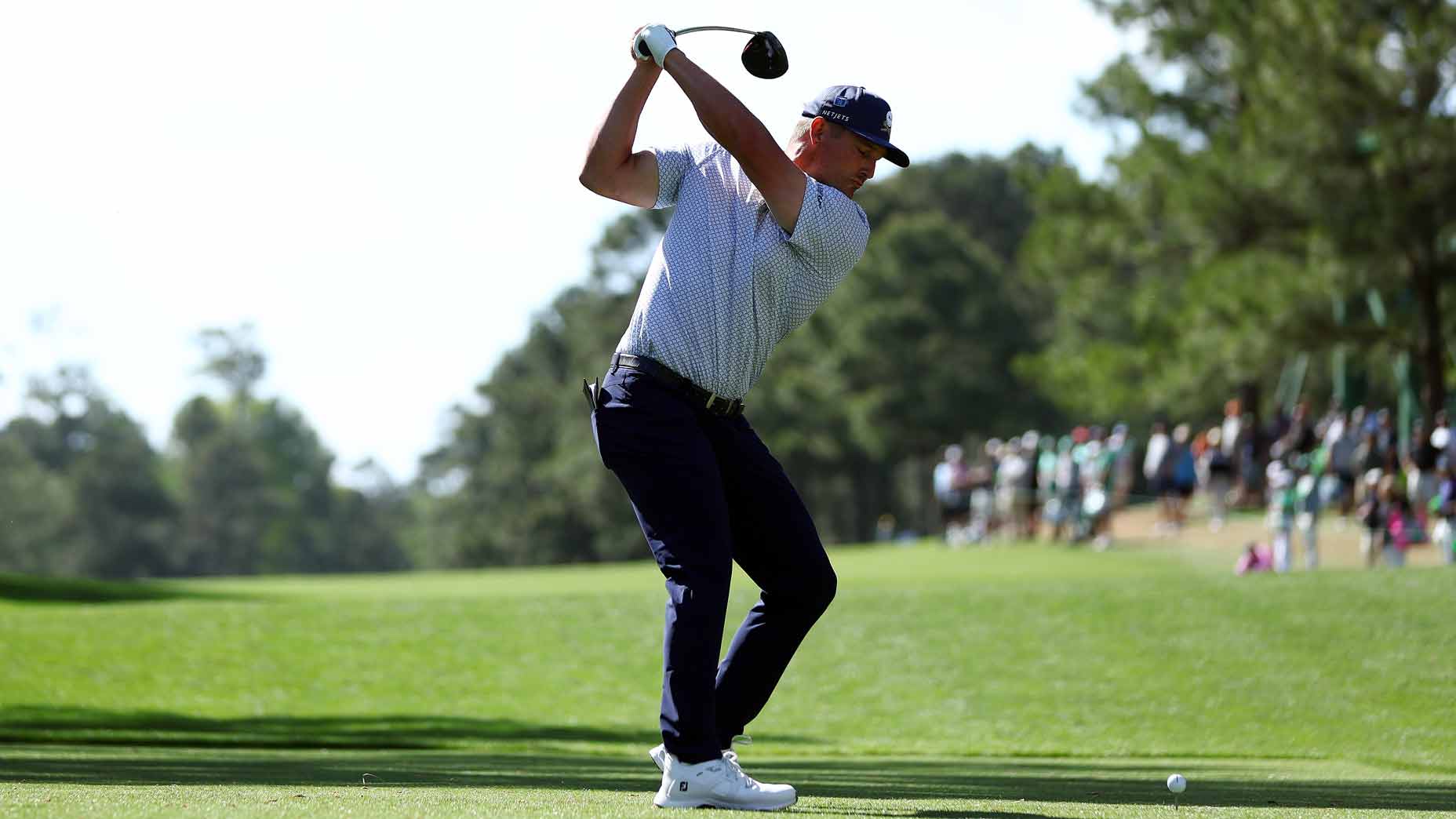The short-hitters’ guide to conquering Augusta National: 7 keys to victory from past winners
- Share on Facebook
- Share on Twitter
- Share by Email

Zach Johnson on the 18th tee in the final round of the 2007 Masters Tournament.
Getty Images
Take a look at the last decade’s winners of the Masters, and the list reads like a murderer’s row of some of the game’s longest players: Scottie Scheffler. Dustin Johnson. Tiger Woods. Jon Rahm. Bubba. All bombers.
Yet, occasionally, a mid-length player manages to crack the champion’s lineup at Augusta. Zach Johnson, with an average length of 280 off the tee when he won the event in 2007, was the last short hitter, by pro standards, to claim a green jacket.
But there have been plenty of them in the tournament’s history: Larry Mize in 1987. Mark O’Meara in 1998. Mike Weir in 2003. Nick Faldo, three times. Ben Crenshaw and Bernhard Langer twice. All players of average or even below-average length off the tee.
And despite the yardage-dampening effects of Father Time, both Langer and Mize have teed it up at the Masters each year since their wins. This year, Langer intended to mark his 41st and final competitive lap around Augusta, but a torn Achilles has likely put those plans on hold. But his consistency has been remarkable. Now hitting about 270 off the tee, the 66-year-old has maintained that the necessity of hitting hybrids into the greens—and the relentless lengthening of the course—has rendered the Masters unwinnable for him at this point. But it was just 10 years ago, in 2014, that Langer managed to contend at age 56. A final-round 69 earned him a stunning T8 finish.
So what is the secret to conquering Augusta National when you don’t have 300-plus-yard drives to propel you down those perfectly manicured fairways? It’s not an entirely irrelevant question as players anticipate the USGA’s proposed ball rollback scheduled for 2028. We asked a handful of past short-hitting champions for their best advice on what worked for them. Their answers could help improve your game too.
7 keys to conquering Augusta National as a short hitter
Prioritize the Fairway
One thing’s for sure: If you can’t hit it long, you need to be accurate.
“For a shorter hitter, an underrated part of Augusta National is hitting the fairway,” says Mike Weir. “Long guys can get away with maybe playing out of that little first cut of rough, but a shorter hitter can’t. You’ve got to be coming out of the fairway, especially because we’re going to be in there with the longer irons. If you’re coming out of that first cut with a 4- or 5-iron, there’s no way you can stop the ball on the green. But on a fairway you have a chance.”
Feast on the Par 5s
While the par 4s at Augusta are brutes, the par 5s are comparatively friendly, and every player we spoke to stressed the importance of capitalizing on potential birdie opportunities, even if the green isn’t reachable in two.
What 100 practice holes at Augusta National taught this Masters rookieBy: Josh Sens
“You’ve got to take advantage of the par 5s, regardless of the conditions,” says Zach Johnson. “You’ve got to position yourself on your approach shots based on where the pins are and where you’ve got to be to get to that pin. We do that every week, but specifically at Augusta, you have to do it.”
For Nick Faldo, capitalizing on the par 5s sometimes meant simply having the mental discipline to lay up when a playing partner goes for the green in two.
“Mental strength is really doing what you want to do and not getting influenced by the other person,” he says. “If the other person on a par 5 knocks it over the water, the real mental strength is to go, ‘I don’t like that. I can’t do that. So I will lay up.’ ”
Up Your Trajectory for Softer Landings
Larry Mize employed a simple setup tweak to help him maximize his trajectory into Augusta’s greens. “My instructor, Luke Barnes, worked with me there early in the week [in ’87],” Mize recalls, “and said to me, ‘Look over there at Jack [Nicklaus]. That man’s won here six times. And he hits that ball high and soft in the greens. We need to try and copy that a little better.’ And, obviously, that week I was able to do that. Hit my irons really good and moved the ball up in my stance just a little bit to make sure I got a little bit of a higher trajectory on the ball. I got the ball up in the air, and I was able to bring it down softer.”
I don’t care how far or how short you hit it, if you don’t putt well at Augusta National you’re going to have a hard time winning. Mark O’Meara
Wedges Are Key
“No matter who you are, you’ve got to have a really good short game to win at Augusta,” Mize says.
Mike Weir concurs and says he tries to visualize the shots he’ll face ahead of time. “I try to, in my head, think of all the wedge shots I’m going to have on the golf course. And there’s about five of them. There’s the par 5s. There’s No. 3. And really that’s about it. So, if you play four rounds, that’s 20 wedge opportunities for a short hitter.”
Putting Is Everything
You can’t win at Augusta without a deft touch on the greens — and putting at the Masters is unlike any other tournament.
“When the greens are firm, and they haven’t had a lot of rain, your touch just has to be so precise,” says Mark O’Meara. “Because if you’re an inch or two off on your speed, that could be a difference between three to five feet where your putt ends up.”
Weir says he employed a completely different strategy than usual when putting at Augusta: dripping the ball into the hole.
Masters 2024: How do you beat Augusta National? Dominate the par-5sBy: GOLF Editors
“You do putt differently there,” he says. “You kind of putt with the Ben Crenshaw method of seeing the ball just die in the hole. You start getting aggressive with eight-foot putts and 10-foot putts, and it catches a lip. No other course that the ball lips out more than Augusta National. When it lips out, it doesn’t just lip out and be near the hole. It lips out and you have four or five feet back. So it’s really important to have this dying touch.”
Be Wary of Treacherous Pins
Avoiding disaster is paramount at Augusta, and much of it comes down to staying on the right side of risky hole locations, many of which are in play right off the bat.
“The first hole, it’s fairly generous for the players off the tee,” O’Meara says. “But that first green that sits out, and they put that pin over on the left side with a left front or left back, and if you miss, short-side yourself to the left, it’s almost impossible to get the ball up and down, unless you’re Jordan Spieth. And then No. 3, whether the pin’s in the very front right or the pin’s over on that left side, if you short yourself, it’s just hard.”
Zach Johnson fears yet another front-nine green. “The front left pin on No. 4 from the back tee, I think is the hardest shot on the golf course without any water.”
It Ain’t Over Till It’s Over
For many short hitters, just making the cut at Augusta is worthy of celebration. But for Weir, 21 years removed from his lone major win, it’s a sign to keep pushing.
“If you make the cut there, you’re in the mix. You’re not that far away. And you have a good round on Saturday and you’re right in the tournament,” he says. “So it’s a long shot, no doubt about it. But I feel like I could be right there. If things line up, yes, I can be right there come Sunday.”
Additional reporting by Josh Sens.
Latest In News

Golf.com Editor
As a four-year member of Columbia’s inaugural class of female varsity golfers, Jessica can out-birdie everyone on the masthead. She can out-hustle them in the office, too, where she’s primarily responsible for producing both print and online features, and overseeing major special projects, such as GOLF’s inaugural Style Issue, which debuted in February 2018. Her original interview series, “A Round With,” debuted in November of 2015, and appeared in both in the magazine and in video form on GOLF.com.











